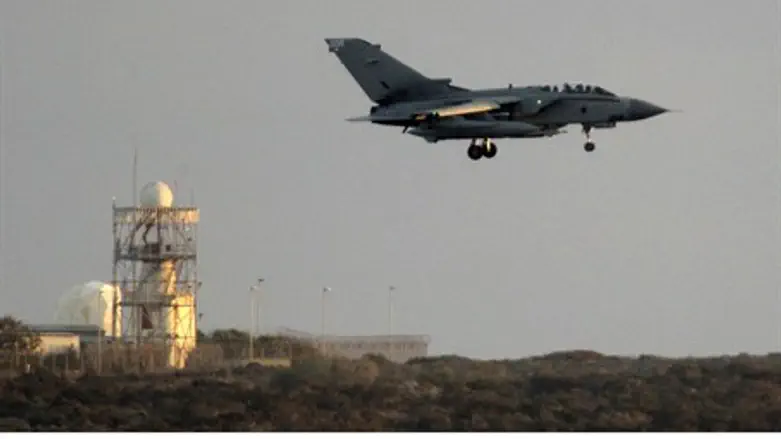
After having flown missions over Afghanistan and Libya, French Rafale fighter pilot "Sharpy" now faces fresh challenges on his new assignment against the Islamic State (ISIS) jihadist group in Iraq.
"We are well-trained, we know all the procedures but you still need to get used to the territory," he said after landing his fighter on the carrier Charles de Gaulle following a nighttime sortie.
French warplanes have formed part of the US-led coalition carrying out raids against ISIS jihadists in Iraq for several months.
As in Afghanistan, the enemy is extremely mobile and often elusive.
ISIS fighters embed in towns among the general population, complicating air strikes and attempts by Iraqi forces to retake territory seized by the extremists.
But unlike in previous conflicts, where air power supported an extensive troop presence, "we have very few people on the ground" in Iraq, Sharpy said.
"The planes have a role to play in identifying how the enemy moves, changes position. It's really another way of waging war."
After takeoff from the Charles de Gaulle, stationed in the Gulf, the Rafale and Super Entendard attack planes fly northwest, conducting sorties over jihadist strongholds, including Tikrit and Mosul.
After refueling from coalition supply planes, the jets spend several hours in and around their operation zone where they mainly conduct aerial reconnaissance.
The planes photograph potential future coalition targets and assist Iraqi and Kurdish peshmerga forces below with real-time intelligence on ISIS positions.
"With our means of reconnaissance, including models of infrared video cameras, we can see personnel and vehicle movements and give (allies) a better idea of what is happening on the ground," Sharpy said.
The pilot said the hardest part was when the jets engage the enemy. "You need to respond quickly and possibly drop a bomb or fire your guns. It is stressful," Sharpy said.
'Milliseconds from disaster'
Concentration is paramount and even though each flight can last several hours, the pilots cannot afford to switch off for a second.
"The adrenaline is pretty concentrated, that keeps you going," according to Sharpy. "There are times during the flight when you can relax a little and that is when the fatigue creeps in."
Yet those on mission must keep their guard up, even after the enemy has withdrawn.
There is a long series of checklists to complete, and they must maintain regular radio contact in airspace that can grow congested with coalition planes.
After up to six hours of solid flying, the pilots need to be especially focused as they come in to land.
Although it is one of the biggest aircraft carriers on earth, landing a supersonic jet on the Charles de Gaulle can prove challenging.
"You're only milliseconds from disaster," Sharpy said.
Even with their wheels down, the coalition pilots also face danger on the ground.
The burning to death of captured Jordanian pilot Maaz al-Kassasbeh in a gruesome ISIS video released last month drove home for Sharpy and his colleagues how the airmen are always in the enemy's firing line.
He gave the interview with his face covered, part of the French military's strict policy of anonymity for its servicemen since January attacks by Islamist gunmen in Paris that killed 17 people.
Seeing "such abuses inevitably has a psychological effect," Sharpy admitted.
"Many pilots ask themselves: 'What happens if I fall into the hands of ISIS?'"
"But this has also increased our determination. Fighting an enemy that is capable of such terrible acts is obviously a great source of motivation for pilots."
AFP contributed to this report.
